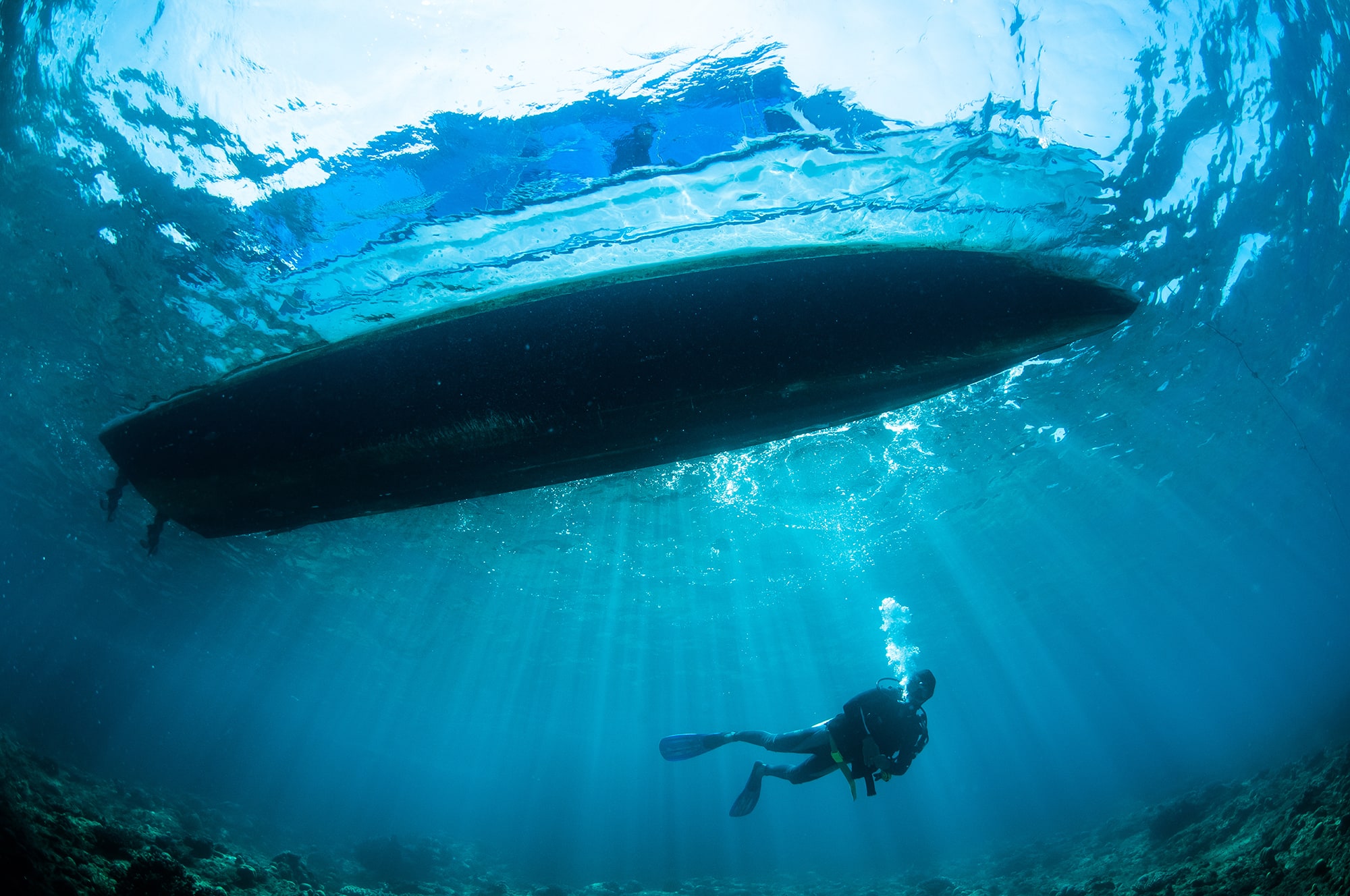Bubbles in the blue?
There are moments in which, especially if you’re someone working in the field of research at DAN, you need to stop to reflect on certain situations to find new answers to important questions.
The facts.
Spring 2013… a tranquil dive in warm seas, all the well-known parameters have been respected. Keeping within the safety curve, having surfaced within the limits of 10m/minute and taken a safety stop, during the stop the diver begins to feel some discomfort. Once out of the water the symptoms are apparent and oxygen is administered. Fortunately, with the aid of DAN, everything is resolved quickly, but one question spontaneously arises: Could these symptoms that manifest underwater be caused by the presence of bubbles that form before surfacing?
Reflection
During our tests we’ve identified the production of post-dive, “latent” bubbles, reaching a peak between 15 and 60 minutes. In rare instances bubbles have been found during what we call “moment zero,” which is the moment right after exiting the water. Then how is it possible that the diver already mentioned having problems at 3 metres depth during the safety stop?
The project
Cases such as this push us researchers to interrogate ourselves, and to promote projects that involve the study of a potential “gaseous phase” during resurfacing.
Though it isn’t so simple to take a doppler, bring it into the water, and record an interpretable signal. Not to mention that when it comes to water and dopplers, they don’t exactly agree with one another! At this point we need to brainstorm – a good “tête-à-tête” to decide on our new project. Along with our experts, we being studying a prototype of a diving suit that allows us to record doppler signals during a dive. Then, two months later… we have our first prototype of the doppler diver.
The test
Under the supervision of Prof. Alessandro Marroni, President of DAN Europe, and Dr. Danilo Cialoni, European Research Area Supervisor, a test protocol is defined that involves hyperbaric chamber dives to verify the instrument’s performance. You are probably asking yourself, “What does this have to do with the hyperbaric chamber? There is no water in there!” True… very true, but the experience can show us if the high air pressure can cause the instrument to fail: a very efficient stress-test, even more so than in water!
A new research project always fills the heart with many emotions. Passing days upon days developing a feasible study and then arriving at the defining moment… will everything work perfectly? During this phase, the strategy that DAN Europe has always put forth in the field is a big help: strong trust in the team and passion at its purest form!
We contact the hyperbaric center of Padova, and find a great collaboration. We begin the trials: dives at 40 meters to subject the instruments and divers to the air pressure of the test.
During this phase the diving suit responds agreeably; continuing to operate at its best. Even the doppler has no problems, and the first recordings during a hyperbaric exposure are perfect. We are all happy with the results. They conduct further trials to find the best technical solutions to register the doppler signals. The control centre follows the dive, planned in adherence to the dive table, with rigorous precision by means of the instruments of the hyperbaric chamber.
The first phase of the project ends positively. We have the only instrument in the world that can register doppler signals during a dive, but we are still missing a test in water.
Another important partner of DAN Europe Research is the deepest pool in the world, Y-40. This pool seems like it was constructed specially for research.
The journey of the new doppler approaches its final phase of testing. Thanks to the pleasant water temperature, the diver doesn’t need to wear a wetsuit, so the recording device of the doppler remains visible and accessible. Our new apparatus starts the dive with us, reaches -42 metres and continues to operate. A success in every way. Moving as slow as streams of bubbles escaping a diving regulator, we resurface to the depth indicated in the test (-6 meters). We turn the doppler on again, and then our MP3s. The diver takes the pose of “doppler diver” and our dream materializes like music to our ears… the sound is clear and audible! (watch the video)
Another small step toward tomorrow’s discoveries has been taken. Now the question arises: are there bubbles during the resurfacing stage of a dive? As usual, DAN Europe will give a scientific response. Our medical experts are expanding upon a research protocol and by 2015 we will know something more about bubbles.
Massimo Pieri
European Research Area Supervisor
Data Collection Coordinator
A big thanks to our research volunteers: Davide Bastiani, Natasha Bertozzi, Claudio Corsale, Andrea Covelli, Aldo Ferrucci, Gisberto Ianni
Photo by Aldo Ferrucci

